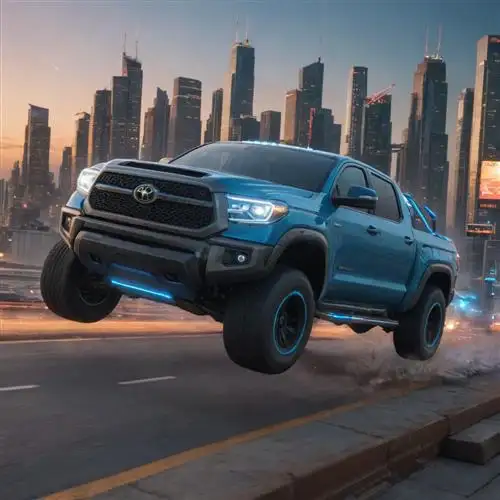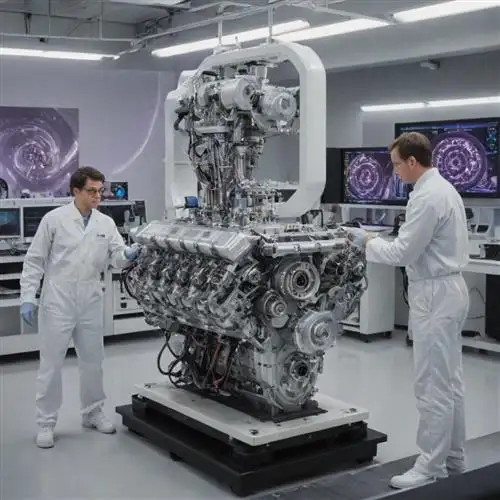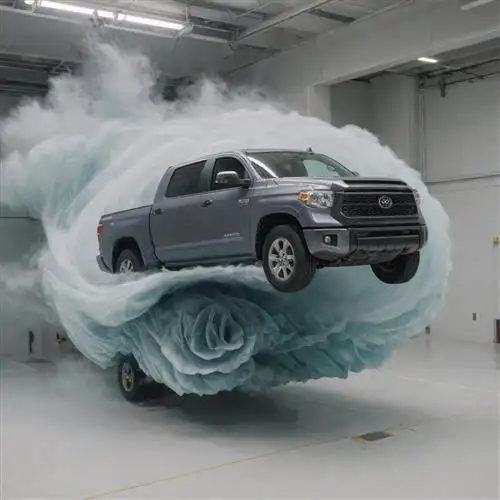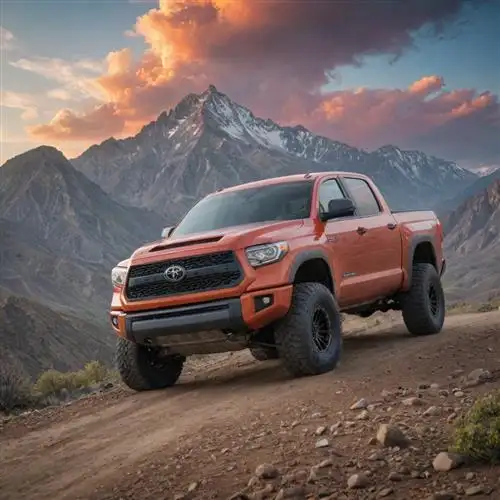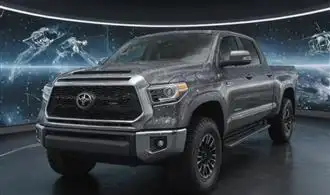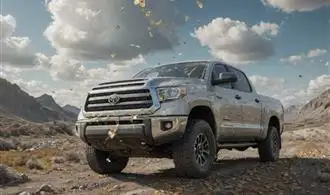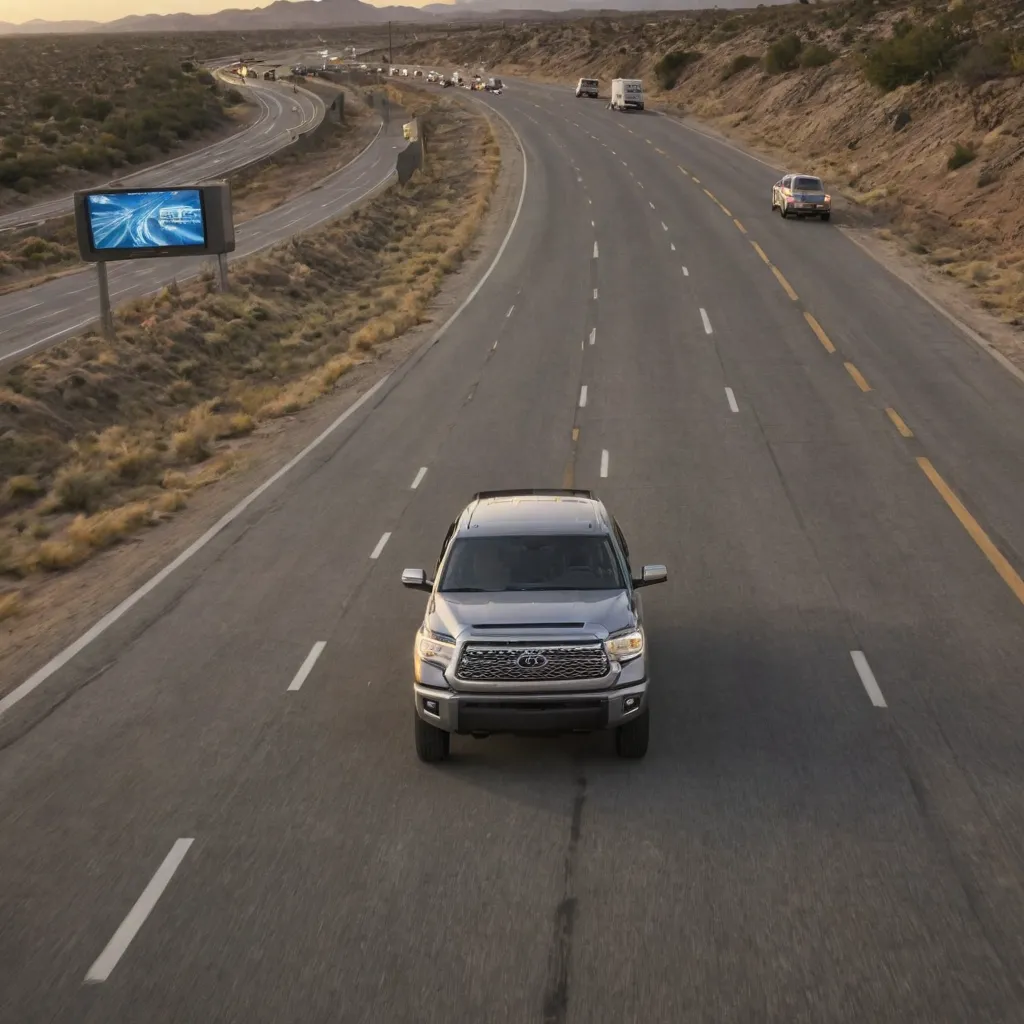
Unleashing the Tundras Potential
The Toyota Tundra has long been renowned for its raw power, exceptional towing capacity, and off-road capabilities. However, with the latest advancements in automotive engineering, the future of Tundra performance is poised to reach new heights. By exploring the innovative features and cutting-edge technologies that are redefining the Tundra's capabilities, we can unlock the true potential of this iconic truck.
At the heart of the Tundra's performance lies its powerful engine lineup. The available 3.5-liter twin-turbo V6 engine delivers an impressive 389 horsepower and 479 lb-ft of torque, providing ample power for tackling demanding terrain and hauling heavy loads. This engine's advanced turbocharging system enables instant throttle response and exceptional fuel efficiency, ensuring the Tundra can meet the needs of even the most demanding drivers.
Complementing the engine's prowess is the Tundra's advanced suspension system. The available Bilstein off-road shock absorbers, paired with the truck's robust frame and high-strength steel construction, offer unparalleled ride quality and responsiveness, both on and off the pavement. This suspension system not only provides a smooth and comfortable ride but also enhances the Tundra's handling and stability, allowing drivers to tackle challenging terrain with confidence.
In terms of towing and hauling capabilities, the Tundra continues to set the benchmark in its class. With a maximum towing capacity of up to 12,000 pounds and a payload capacity of 1,940 pounds, the Tundra can handle even the most demanding jobs with ease. The availability of features like Trailer Sway Control, Integrated Trailer Brake Controller, and the Tow/Haul mode further enhance the Tundra's towing capabilities, ensuring smooth and stable operation even when hauling heavy loads.
But the Tundra's performance capabilities go beyond just raw power and towing capacity. The truck also boasts a range of advanced technology features that optimize its performance and efficiency. The available Multi-Terrain Select system, for instance, allows drivers to choose from various driving modes tailored to different terrain and conditions, ensuring optimal traction and control in any environment.
- The available Crawl Control feature, which automatically manages the Tundra's throttle and brakes during low-speed off-road situations, allows drivers to focus on steering while the system handles the difficult task of navigating challenging terrain.
- The Lane Tracing Assist and Dynamic Radar Cruise Control systems further enhance the Tundra's performance by providing advanced driver assistance and safety features, helping to maintain lane positioning and adjust speed based on surrounding traffic conditions.
Advancements in Tundra Powertrain Technology
At the heart of the Toyota Tundra's impressive performance lies its advanced powertrain technology. The latest generation of the Tundra boasts a host of cutting-edge features that elevate its capability and efficiency to new heights.
The Tundra's powerful engine lineup is a testament to Toyota's engineering prowess. The available 3.5-liter twin-turbo V6 engine delivers an exceptional balance of power and efficiency. This engine utilizes direct and port fuel injection, as well as Variable Valve Timing with intelligence (VVT-i), to optimize combustion and extract maximum performance from every drop of fuel. With an impressive 389 horsepower and 479 lb-ft of torque, the Tundra can tackle demanding tasks with ease, whether it's towing heavy loads or navigating challenging terrain.
Complementing the engine's raw power is the Tundra's refined and responsive transmission. The available 10-speed Electronically Controlled Automatic Transmission with intelligence (ECT-i) provides seamless, smooth shifting, ensuring the engine is always operating in its optimal power band. This advanced gearbox incorporates a wide gear ratio spread, allowing the Tundra to deliver impressive acceleration from a standstill, as well as efficient highway cruising.
The Tundra's powertrain also features advanced technologies designed to enhance its performance and efficiency. The available Automatic Limited-Slip Differential (Auto LSD) system can automatically detect wheel slip and apply braking force to the slipping wheel, providing improved traction and stability in various driving conditions. Additionally, the Tundra's Trailer Sway Control system helps maintain control and stability when towing, automatically applying brake pressure to individual wheels as needed to counteract trailer sway.
To further optimize the Tundra's performance, Toyota has incorporated cutting-edge engine cooling systems. The available Multi-Mode Exhaust system, for instance, features electronically controlled valves that can adjust the exhaust flow, enabling the engine to operate in the most efficient mode based on driving conditions and demands. This not only enhances power delivery but also contributes to improved fuel efficiency.
Aerodynamic Enhancements for the Tundra
Toyota's commitment to improving the performance and efficiency of the Tundra is evident in the latest aerodynamic enhancements. These modifications not only enhance the truck's aesthetics but also contribute significantly to its overall capabilities. Let's delve into the key features that make the Tundra's aerodynamics truly impressive.
The Tundra's redesigned front grille is a prime example of form meeting function. The sleek, sculpted design not only gives the truck a bold and assertive appearance but also helps to channel airflow more efficiently around the vehicle. This reduction in aerodynamic drag translates to improved fuel efficiency and enhanced high-speed stability, crucial for those who regularly haul heavy loads or tow large trailers.
Complementing the front grille, the Tundra's aerodynamic side mirrors have undergone a careful redesign. These mirrors feature a streamlined shape that minimizes turbulence and wind resistance, further enhancing the truck's overall aerodynamic profile. The result is a smoother, more stable ride, even in windy conditions, which is particularly beneficial for highway driving.
Another noteworthy aerodynamic enhancement is the Tundra's tailgate design. Rather than the traditional flat design, the tailgate features a subtle curvature that helps to guide airflow smoothly over the truck's rear. This optimization of the airflow not only improves fuel efficiency but also reduces wind noise, providing a more peaceful and comfortable driving experience for both the driver and passengers.
The Tundra's underbody panels also play a crucial role in enhancing its aerodynamic performance. These panels are strategically positioned to redirect airflow and minimize drag, resulting in improved fuel economy and a more stable driving experience, especially at higher speeds. The attention to detail in this area is a testament to Toyota's commitment to continuously improving the Tundra's capabilities.
In addition to these specific design elements, the Tundra also benefits from the use of advanced computational fluid dynamics (CFD) simulations during the development process. This cutting-edge technology allows Toyota's engineers to virtually test and refine the truck's aerodynamic performance, ensuring that every aspect of the design is optimized to maximize efficiency and performance.
Innovative Suspension Upgrades for the Tundra
As the Toyota Tundra continues to evolve, the demand for enhanced performance and off-road capabilities has never been higher. One of the key areas that has seen significant advancements is the truck's suspension system. Manufacturers have been hard at work developing innovative suspension upgrades that not only improve the Tundra's ride quality but also expand its versatility in diverse terrain. From cutting-edge shock absorbers to advanced coil spring setups, these enhancements are transforming the way Tundra owners experience their vehicles.
One of the most notable developments in Tundra suspension upgrades is the rise of air suspension systems. These cutting-edge systems allow drivers to adjust the ride height of their vehicles with the touch of a button, enabling them to tackle challenging off-road conditions with ease. By increasing ground clearance, air suspension systems provide the Tundra with the ability to navigate over obstacles, traverse muddy terrain, and conquer steep inclines with confidence. Additionally, these systems can be lowered for improved on-road performance, delivering a smooth and comfortable ride on the highway.
Another area of innovation in Tundra suspension upgrades is the advancement of shock absorber technology. Manufacturers have been exploring the use of advanced materials and design features to create shocks that offer superior damping, improved response, and enhanced durability. These high-performance shock absorbers can significantly enhance the Tundra's handling, stability, and overall off-road capabilities, making it a more capable and responsive vehicle in a wide range of driving conditions.
In addition to air suspension and shock absorber upgrades, the Tundra has also seen advancements in coil spring setups. These advanced coil spring systems are designed to provide a more comfortable and controlled ride, while also delivering impressive off-road performance. By carefully tuning the spring rates and damping characteristics, manufacturers can create a suspension that offers a perfect balance between on-road refinement and off-road capability.
Integrating Driver-Assist Technologies in the Tundra
The Toyota Tundra has long been a favorite among truck enthusiasts, offering a compelling blend of power, capability, and reliability. As the automotive industry continues to evolve, Toyota is at the forefront of integrating cutting-edge driver-assist technologies into the Tundra, redefining the future of performance and safety in the full-size pickup segment.
At the heart of the Tundra's driver-assist capabilities is Toyota's renowned Safety Sense suite of advanced safety features. This comprehensive system includes a Pre-Collision System with Pedestrian Detection, which uses radar and camera technology to detect potential collisions and automatically apply the brakes if the driver fails to respond. The Lane Departure Alert with Steering Assist function helps keep the Tundra centered in its lane, while the Automatic High Beams ensure optimal visibility in low-light conditions.
Beyond these essential safety features, the Tundra also boasts an array of innovative technologies designed to enhance the driving experience. The available Adaptive Cruise Control system maintains a pre-set distance from the vehicle ahead, automatically adjusting the Tundra's speed to maintain a safe following distance. The Blind Spot Monitor with Rear Cross-Traffic Alert further expands the driver's awareness, alerting them to vehicles in their blind spots and to potential hazards when backing up.
One of the most impressive advancements in the Tundra's driver-assist capabilities is the available Panoramic View Monitor. This advanced system utilizes multiple cameras to provide a 360-degree bird's-eye view of the vehicle's surroundings, making it easier to navigate tight spaces and maneuver the Tundra with precision. The system's intuitive interface and customizable display settings allow drivers to tailor the information to their specific needs, whether they're navigating a crowded jobsite or towing a heavy trailer.
But the Tundra's driver-assist technologies go beyond mere convenience and safety; they also contribute to the truck's overall performance. The available Trailer Backup Guide system, for instance, uses cameras and sensors to detect the trailer's position and provide on-screen guidance, making it effortless to back up with a trailer attached. This not only enhances the Tundra's towing capabilities but also reduces the stress and frustration often associated with maneuvering a large vehicle and trailer combination.

